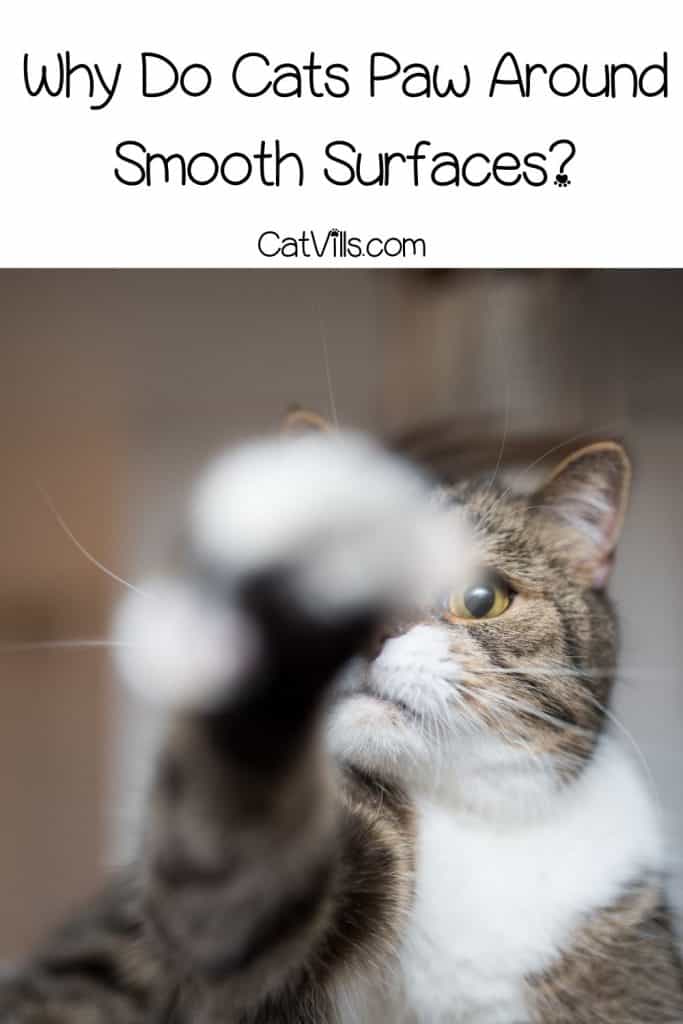Last Updated: 1 year ago
Have you ever had to ask, ‘Why does my cat paw at smooth surfaces?’
As any cat owner knows, cats are just full of curious and quirky habits.
We find it a little more peculiar when spotting cats scratching a smooth or shiny surface!
So today, we want to share with you all we have learned about this oddball behavior.
Why Do Cats Paw on Smooth Surfaces?

As a cat parent, you have probably found yourself staring at your cat, utterly transfixed by their curious behavior.
On one such occasion, one of my cats was doing something new. Why is my cat pawing at the wall?
I didn’t see anything that could catch her interest. She didn’t see any visible differences in the area of the wall that transfixed her.
Was she imagining that there was something for her to play with? Why play up against a vertical surface?
It turns out there are a couple of reasons why cats paw and scratch at smooth surfaces. Let’s explore!
1. They’re Marking Their Territory
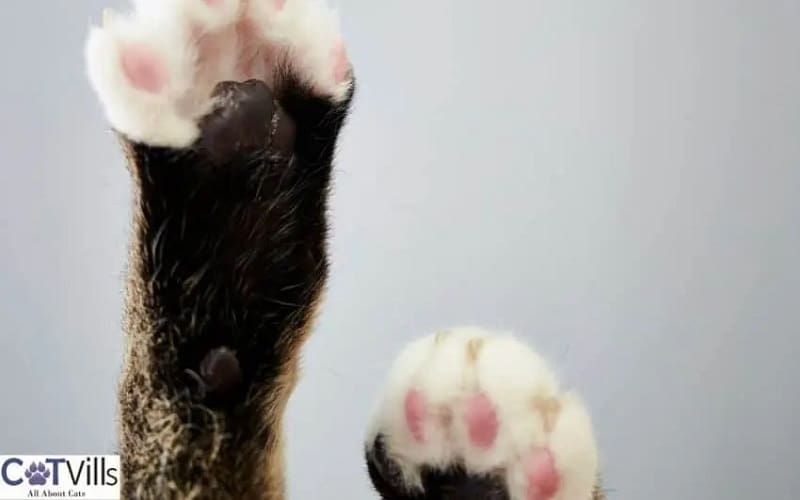
It isn’t easy to imagine a reason for your cat to play with a wall.
Perhaps if the wall had features such as cracks, markings, or an interesting pattern, it would make sense. But a plain, evenly painted wall offers no visible incentive.
If you agree and can’t think of a single reason your cat would find it entertaining, you are pretty much on point.
It turns out cats don’t paw with walls and other non-reflective smooth surfaces for play but rather to mark their territory.
Our kitties’ have sweat glands on their paws that double as scent glands. These glands leave their scent on surfaces when your cat paws at them.
They commonly do this on shared spaces, like couches, your bed, or a favorite rug. As it turns out, they do the exact same thing on smooth surfaces like walls.
The scent marks their territory. Even a cat living in a single-cat household will instinctively mark their territory in this way.
2. They’re Sharpening Their Claws
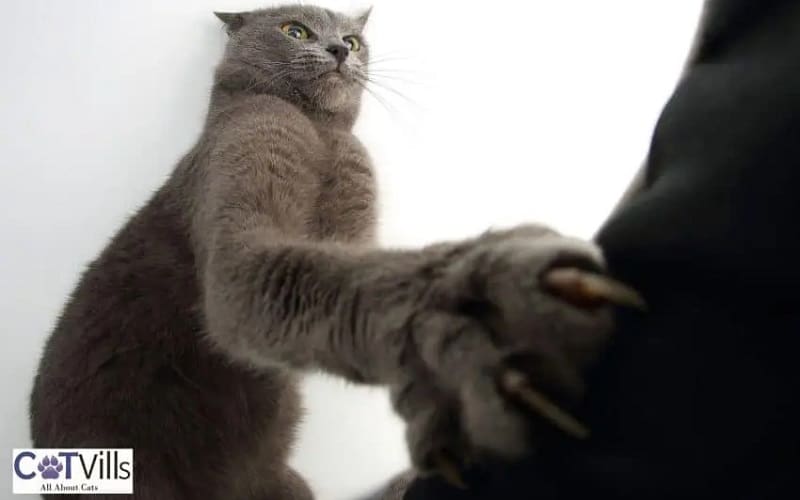
If you spot your furry pal scratching at a wall, don’t fret.
They have not gone mad and launched an offensive on the vertical barriers of their home.
Cats scratch at walls and other non-reflective surfaces to sharpen their claws.
Now, I know what you’re thinking: wouldn’t a rough surface work better?
We tend to think that, but we don’t really understand just how sharp our fluffballs keep their claws.
While smooth surfaces like walls might seem textureless, they are more like very fine sandpaper for cat claws.
The finer, the better the wall at sharpening a kitty’s claws to that piercing, pointed sharpness.
3. “Mirror Kitty” is Just Their Reflection
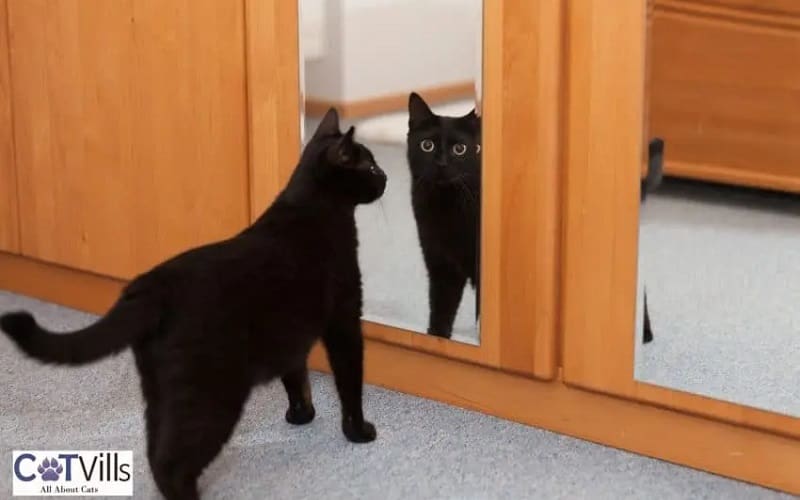
There is a fascinating reason that cats go to mirrors and other highly reflective surfaces.
To really understand it, we need to touch on the mirror self-recognition test (aka the MSR test). This test is designed to determine whether an animal can recognize itself in a mirror.
First, an animal is anesthetized, then clearly marked, traditionally with a red spot (giving the test its other popular name, the red spot test).
The objective is to see whether an animal can recognize that the red spot is on them. If they can, they clearly know it is them in the mirror.
If not, they do not make the connection that their reflection is their own. Bonobos, bottlenose dolphins, and Eurasian magpies have all passed the test.
There are also elephants and even a type of fish, the bluestreak cleaner wrasse, that pass the test with ease.
Scientists interpret the results to indicate that the animals that pass the test are self-aware. It is a quality that was widely believed to be exclusive to humans until relatively recently.
Sadly, our feline friends do not pass the MSR test. That means that they don’t recognize that they are staring at their own reflection. When a cat looks into a mirror, they think that they are looking at another cat.
Now it’s pretty clear what’s going on. Our kitties are trying to make sense of this new cat stuck behind the sheet of glass. They will pounce, play, paw, and scratch at the mirror as part of their fact-finding mission.
This mind-bending problem doesn’t stop the keen kitty cat from marking their territory with the scent from the glands in their paws. Two birds, one stone.
4. They Find The Outside World Fascinating

In my house, it’s not uncommon to see my cat sitting on the windowsill, pawing away at the glass.
At first, I thought he was interacting with his reflection, aka “Mirror Kitty.” However, this behavior doesn’t quite make sense on bright days since he is not reflected in the glass.
It turns out that he’s just really fascinated by all of the action that he sees outside the window.
From birds flitting by to rays of sunshine streaming through to the neighbor walking his dog, the outside world is full of so many wonders just beyond the reach of his paws.
Of course, he may also just be marking his territory to tell all of those wonders, “Stay away, this is mine!” Kind of like how Mufasa tells Simba that everything the light touches will belong to him one day.
5. They Want to Hunt

While this reason applies during the day too, it’s more common at night.
Many people think that cats are nocturnal. While they do follow a nocturnal sleeping pattern, they are crepuscular.
That means that they are most active at sunrise and sunset. It’s fairly common knowledge that cats sleep about 15 hours a day, and some even nap for roughly 23 hours total!
Aside from spotting their reflection more often at night, cats also appear to have heightened hunting instincts once the sun goes down.
That could lead to heightened interest in the outside world, causing your cat to interact with windows more often.
How to Stop Cats from Pawing at Smooth Surfaces
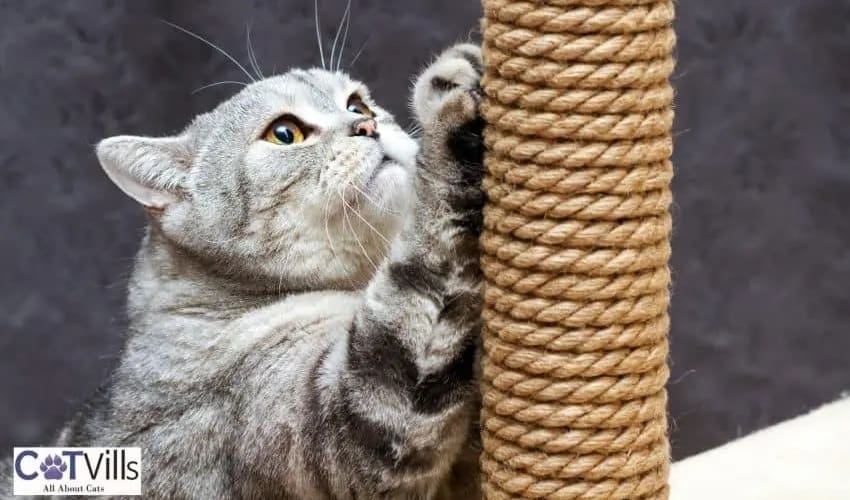
If your cats aren’t destructively pawing at smooth surfaces, there’s really no reason to stop them. After all, as we’ve seen above, it’s pretty normal cat behavior.
On the other hand, if the pawing turns into scratching and starts to wreak havoc on your walls, windows, and floors, then you’ll obviously want to put a stop to it.
To do that, you need to both redirect and deter your cat.
Try getting a new scratching post that offers both smooth and rough surfaces and redirecting him to it whenever you notice him scratching your walls.
Then, spray vinegar or other scents that cats hate on the surfaces you don’t want them touching to deter them.
FAQs

WHY DO CATS PAW AT WALLS AND OTHER NON-REFECTIVE SURFACES?
Cats have scent glands in their paws, and they paw at walls to mark their territory. They claw at walls to sharpen their nails.
WHY DO CATS CLAW OR PAW AT MIRRORS AND OTHER HIGHLY REFLECTIVE SURFACES?
Cats claw and paw at mirrors because they cannot recognize themselves in their reflection. They think that the cat they see is a cat behind the glass surfaces of mirrors.
Conclusion
We know that our cats are curious animals. Their desire to interact with their reflection or be utterly captivated by something they spot through the window is evident.
This curiosity goes some way to explain why cats claw or paw at smooth surfaces, and the rest is instinctive behavior.
They mark the surface with scent from the glands in their paws, and they claw at surfaces to sharpen their nails.
What do you think of these reasons why cats paw at smooth surfaces? Share below!
